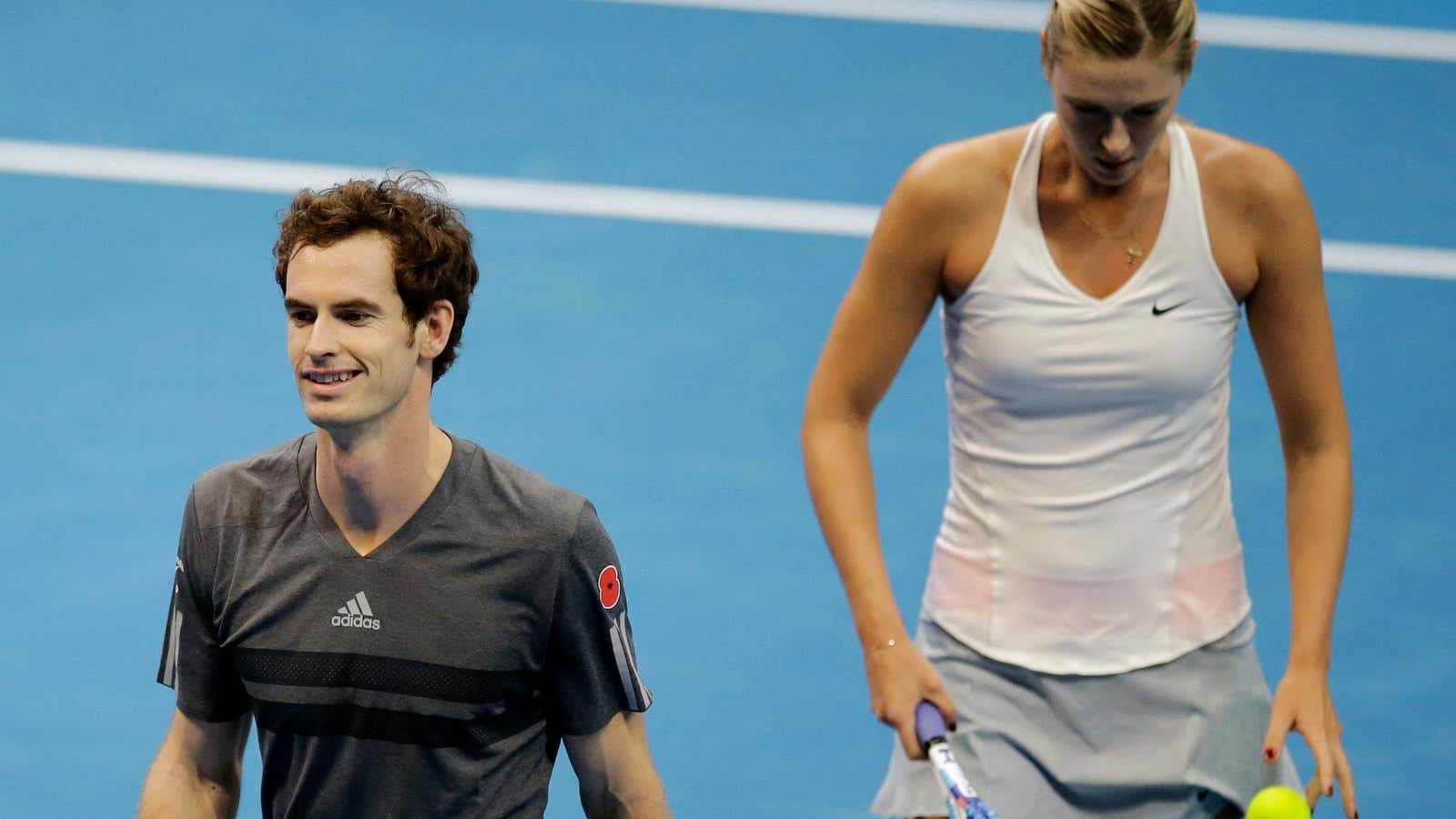Novak Djokovic didn’t have much time to rest after winning the Association of Tennis Professionals Tour World Finals in London on Nov. 16. The world’s number one, along with Roger Federer, Andy Murray, Serena Williams, Maria Sharapova and the other best players in the world are now in Manila playing in a glitzy brand-new exhibition tournament, International Premier Tennis League.
The IPTL, which goes until Dec. 13, is a round-robin tournament across four cities, consisting of four teams: the Manila Mavericks, the Singapore Slammers, the Indian Aces, and the UAE Royals. The star players are distributed across the four teams—Murray and Sharapova are on the same side, for example.
Teams play five sets: a men’s singles, a women’s singles, a men’s doubles, a mixed doubles, and a legends match, featuring people like Andre Agassi and Pete Sampras. Sets are won by being the first to six games, but rather than the set continuing if it’s a 5-5 tie, there’s instead a five-minute timed face-off to decide the set. It’s quick and efficient: speed tennis for a new generation with shorter attention spans. And lucrative: Investors include the former Indian cricket captain Sunil Gavaskar and there’s $1 million in prize money for the players, as well as undoubtedly some eye-watering appearance fees.
And there are more experiments to come. Early next year in Sydney, Federer and Lleyton Hewitt will launch an even more stripped-down form of tennis—with the winner being the first to four games. Tennis Australia’s boss calls it a “game-changer.”
The tennis establishment has been dismissive of these new tournaments. ”I think it’s great that someone else is putting on tennis and taking it especially into new markets,” the ATP Tour’s executive chairman, Chris Kermode, told the BBC. “But I think we just have to be very clear it is a series of exhibitions.”
In a sense, however, these new tournaments are following in the footsteps of the ATP: It was Kermode himself who turned the ATP World Tour Finals in London into a huge money-spinner—and now others are following his lead.
Tennis is just the latest of the more sedate and traditional sports to attempt playing with its format to win new fans. In particular, the IPTL draws direct inspiration from cricket. In 2008, the Indian Premier League was set up and is now the most-watched cricket league in the world. Teams bid for the world’s best cricketers, who slug it out for 11 teams in the 20/20 format, a faster form of the sport that has captured of the imagination of younger fans who aren’t so eager to drink warm beer for three days, waiting for a draw.
Indian cricket also derives much of its inspiration from the abundance of star players guaranteeing a global audience, as in English soccer, and the mildly ridiculous razzmatazz of US football.
Athletics, associated for most casual fans with the Olympics, has an even more recent history of trying to create the tension and drama of sports that last a season. The Diamond League has been going since 2010, taking the traditional Europe athletics circuit to Doha and New York, with athletes earning points at every meet. But whereas you may know who won the 100 meters at the 2012 Olympics, could you name the Diamond League’s reigning 100-meter champion? (Hint: it’s not Usain Bolt.)
The IPTL will be hugely lucrative for the tennis players. But there may be a downside to a more crowded calendar for star players: This would normally be the rest period between the ATP Tour World Finals—fast becoming the fifth Grand Slam and dubbed the Super Bowl of tennis—and the start of the next ATP Tour.
The Australian Open, the first major of the season on Jan. 19, is fast approaching, and the players now in Manila for this meaningless tournament will probably be more tired than usual. How times change. Once, no player would risk a Grand Slam title to play some exhibition games.
